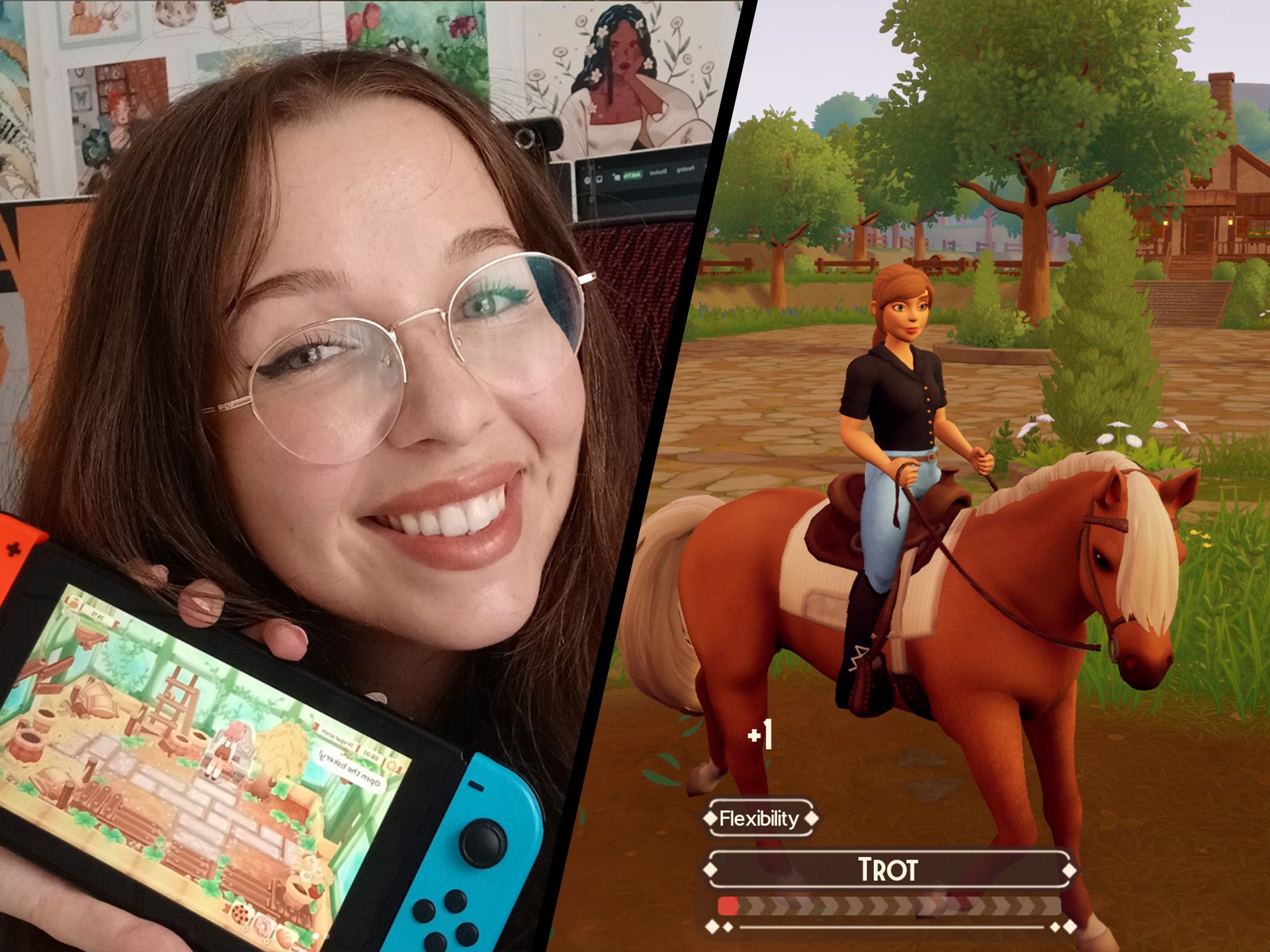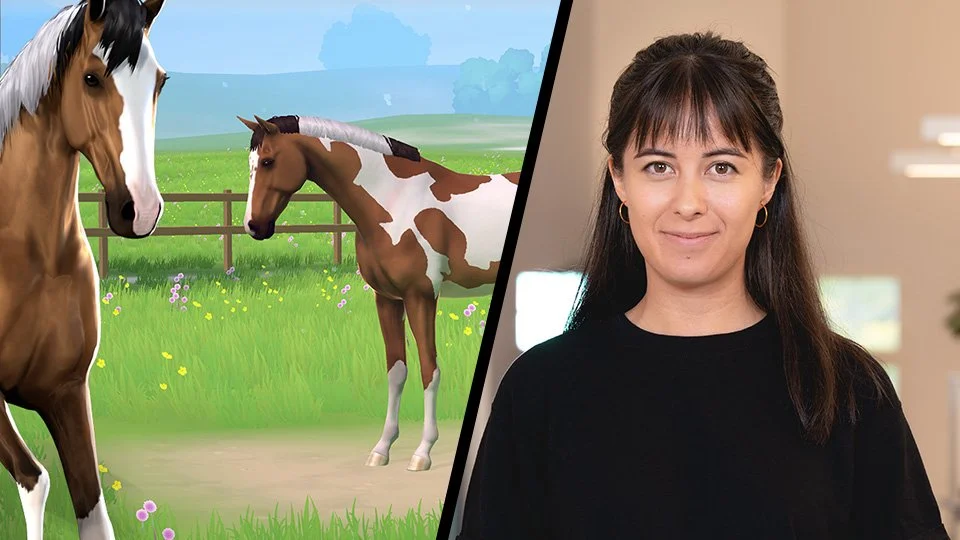Making your own Horse Game – Part Two: Involving Others
In Part One of the Making your own Horse Game article series, we covered some common problems that beginner devs are likely to encounter, and talked about how you can get started in making games without overwhelming yourself. If you’ve missed the first entry in this series, I recommend you start here:
It makes sense to take these first steps by yourself, to practice game creation without relying on others at first. Of course, help should be sought whenever needed, and beginner gamedev communities and forums exist and can be great when you get stuck somewhere. Our own Discord has a channel dedicated to horse game development where people will be eager to help you out wherever they can.
But even when everything is going according to plan, the moment will come when other other people become relevant: possible team mates, playtesters and eventually the public.
Let’s look at some basic guidelines for how to involve other people in your passion projects.
Team Work
If you’re familiar with Indie games, some titles may come to mind when you try to think of games made by one-person studios. Stardew Valley, Banished and even the initial version of Minecraft were all solo projects. But careful: these are the exceptions – a degree of success that you cannot simply expect to imitate.
For every somewhat successful game made by a single person, there are a thousand stories of projects that were abandoned or failed to sell, simply because one person thought they could do more than is actually realistically feasible.
Making, finishing and publishing small games as an individual is absolutely possible. But if you can find like minded creators, collaborative work will soon become tempting. Here too, there are a few things that are worth keeping in mind:
Communication and Management are important skills that are part of game development just like coding or 3D modelling.
Be careful about clearly establishing the expectations of all contributors. Especially in non-professional environments where fair financial compensation may not yet be an option, it is crucial that all team members set clear boundaries for how much time and effort they can invest.
Keeping your projects short (as discussed in part one!) is a benefit in this regard as well, because a finished project offers a natural break point in a work relationship that you are not entirely happy with. Parting with team members during a project can be significantly more difficult than simply not starting a new game together when the last one has been concluded.
Dealing with Feedback and Expectations
Getting playtesters to give you feedback for your games can be more difficult than one might think. Communities such as Reddit’s /r/playmygame tend to have a lot more aspiring game creators than players who like to invest time trying amateur games. The gamedev subreddit’s Feedback Friday threads even have a rule that you need to test someone else’s game in order to ask for feedback on your own.
The nice thing (for creators) about the growing TMQ-related communities however, is that there are hundreds of people eager to check out new horse game content. The advantage of a genre starved for satisfying experiences is that finding enthusiastic playtesters will be a lot easier than it may be in other areas.
The organization, setup and evaluation of playtesting sessions can be a whole science in itself. It is important that you listen and learn, but you cannot let every individual opinion define your next steps.
In this genre, many people will tell you something like “I wish the horses were more realistic”, which is an incredibly vague statement in itself. Do they mean the animations don’t look good? That the horse doesn’t react to neglect negatively? That the quality of textures and shadows is suboptimal?
Sometimes, a point of criticism may tell you something important that is not actually what’s being said. If someone tells you your game is too difficult, could it be that your tutorial simply didn’t explain it well?
Instead of taking an individual layperson’s opinion at face value, you need to gather input from different sources and learn to read between the lines to get to the bottom of what your game’s real problems are. Try to find out why your playtesters say a thing instead of simply doing exactly what they advise you to do.
Business and Marketing
While you’re doing small projects for learning purposes alone, the topics of business and marketing can safely be ignored. But as soon as you have any intention of selling your game – or selling content within your game – you open a whole other can of worms.
It’s said that AAA games use about half their budget for actually making the game, with the other half going into marketing. For Indie games, the numbers often look a bit different, but no game gets sold without significant effort going into making sure that people know about your game. If you don’t think of your game as having a ‘budget’, you can still apply these considerations to your primary resource: time invested.
Even though our audience tends to be a bit desperate and willing to try just about anything, a successful game needs a business case, a monetization strategy, a target audience. What elevates your game above the competition? What makes it unique?
Marketing a game, running its social media accounts, managing a game’s fan community, all of these are their own disciplines and careers in the game industry. If you prefer to focus on art or code, that is fine, but then you need someone to run these things for you. Games that aren’t marketed do not sell. A game’s quality alone can not make it sell if nobody knows about it. Simply assuming that interested players will go look for your game (and find it!) may be slightly more realistic in this starving genre than in many others, but it is still not good enough.
Awareness, Search Engine Optimization, Crowdfunding, Community building… there is a variety of topics that you or someone from your team has to get familiar with if you want to make sure your game is seen, bought and played by more than the few friends you’ve personally told about it.
Word of mouth can be a strong accelerator for good games, but you need to first get the ball rolling.
You can make a game without worrying about business or marketing if getting people to play it is not your goal, that’s fine. But the idea that a good game sells itself and that enough people will somehow happen to hear of your game just because it’s fun to play is dangerously inaccurate. If you release a game without marketing, it will not be seen, period. Properly marketing a game is a long process that takes time and expertise, not something you can take care of with a few social media posts on release day.
A note on Intellectual Property
Beginner game makers often tend to worry about revealing their ideas and early prototypes to others, for fear that ideas might be stolen or copied. Innovative games being cloned is unfortunately not unheard of.
In spite of this, it is almost always unwise to be overly secretive with your game ideas, or to overcomplicate the feedback process with non-disclosure agreements, especially while you’re learning and can use all the help you can get.
Remember that ideas are only a tiny part of what makes a good game. The real quality of a project is determined by its execution, not its premise.
Up Next
In the third and final part of this series, we will look at scope and focus, and the subject of “dream projects”. Have a look right now: Making Your Own Horse Game – Part Three: Scope and Focus













Starting to make a game based on the premise of “what would be my perfect horse game” rather than “what kind of game can I reasonably expect to make” has its pitfalls. Overcomplexity, feature creep and creative burnout from wanting too much are all too common among passionate newbie creators. Let’s look at some of these challenges and how you can work your way around them.